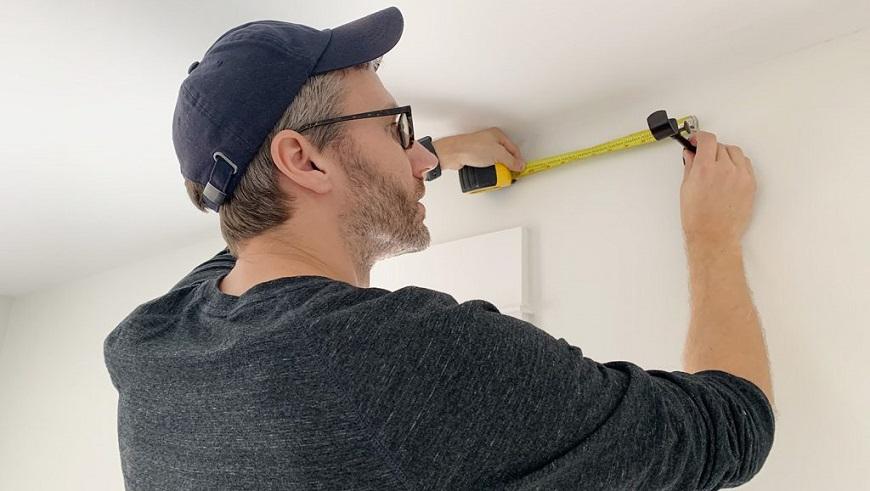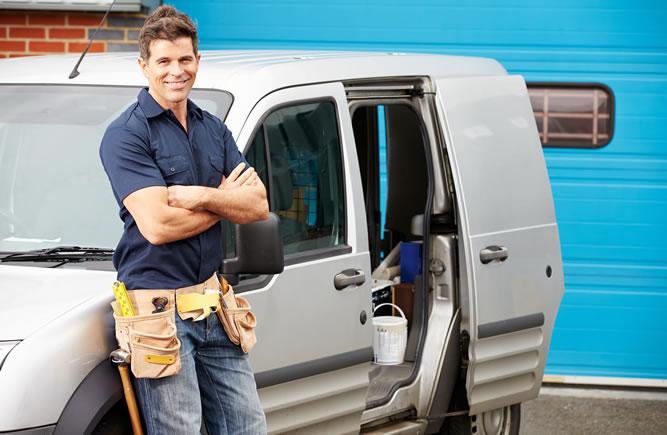Cost of Fitting a Curtain or Handrail
Last updated 20th May, 2025
Do you need a curtain rail fitting? Or possibly a handrail?
The last thing you want are curtains that fall down! If you are thinking about fitting a curtain or handrail, read this useful guide to learn about what you can expect if you decide to fit a curtain or handrail.
You'll also find an overview of how much it'll cost to fit a curtain pole or handrail — and what can impact the prices you're quoted by tradesmen.
Let's get started!

Table of Contents
How Much is Curtain Pole Fitting?
The average cost of installing a curtain pole or handrail is around £80 - £150, dependant on the number of curtains or handrails you require.
Your handyman will usually work at a cost of around £100 – £150 per day.
Although this is a job that you can do yourself, it is easy to damage your walls when attaching handrails and curtain poles. If it's not done correctly you may end up forking out not only for someone to attach them properly but someone to repair the damage that you’ve caused.
The biggest variant in the overall cost will be the quality of handrail or curtain attachment that you buy. To reduce your overall costs you should look at budget options.
Curtain Pole and Handrail Fitting Prices
Below we give some indication of common prices for hiring a handyman to fit a curtain or handrail:
| Description | Material Cost | Labour Cost | Duration |
|---|---|---|---|
| Fit curtain pole (Per room) | £15-£35 | £45-£65 | 1-3 hours |
| Fit single handrail | £20-£75 | £70-£80 | 2-4 hours |
| Fit double handrails | £40-£150 | £90-£120 | 4-6 hours |
Curtain Pole Fitting Cost Breakdown Calculator
Individual costs of fitting a curtain pole only.
Total Cost: £80
Materials
£24
Tradesmen
£56
Waste Removal
£0
Factors That Impact How Much Tradesmen Charge
Although generally speaking, hanging a curtain rail or handrail is a relatively straightforward and affordable job, there are additional factors that may affect the end cost.
The standard of materials you choose for your rails make a significant difference, with high-end options such as a natural wood finish or brass finials costing more than basic alternatives.
In addition to the initial outlay, it may become apparent walls are damaged or require additional work that you hadn't planned for. These are just some of the barriers that could affect the final cost.
Below is a summary of things to consider:
- Choice of Material - Wood or brass will typically be more expensive than plastic.
- Wall Condition - Damaged walls may require additional work before starting.
- Type of Fitting - Such as ceiling mounted rather than wall.
- Position of Rails - This could include a hard-to-reach angle or a curved wall.
- Other Complexities - For example, rails for particularly heavy curtains or handrails on a steep staircare
While hanging a curtain rail yourself as a DIY project may save on labour costs, there's a possibility you can cause damage to your walls. This could then lead to unplanned repair costs, whereas with the help of a professional any mishaps are more likely to be avoided.
What's Involved in Fitting a Curtain Pole or Handrail?
Curtains can make a huge difference to a room, whilst handrails are an important safety measure. However, when it comes to fitting a curtain pole or handrail, there is some know-how required.
Both need to be fitted in the right way in order to function properly, as such it's recommended to seek assistance when installing a curtain pole or handrail.
So What To Expect if You Are Installing a Handrail?
The height will need to be measured from the pitch line to the top of the handrail, to ensure that your handrail is the correct height.
Your installer will measure out the continuous diagonal along the wall that the handrail will follow, to ensure that it is positioned parallel to the diagonal slope of the stairs, at a consistent level all the way along its length.
The handrail will also be measured to ensure that it is the right length for the wall. If the handrail needs to be shortened, it will be trimmed and the proper ending attached so that it is finished properly. Finally, brackets will be marked out evenly along the parallel line and the handrail fitted to the wall securely.
What Is the Process for Fitting a Curtain Pole or Handrail?
The height of the curtain pole will be marked out to ensure that it is positioned with the drop that you require, this will be affected by the type of curtain that you have and whether the curtain hangs from eyelets, rings or fabric tabs.
The brackets at each end will be positioned at least 50mm from the very edge of the side and top of the window. However, if your curtains are thick, it is advisable to leave a little more than 50mm to allow for the extra material.
Your tradesman will use a tool to check whether your wall contains any hazards such as lintels before they drill into the wall. If your wall is damaged or in poor condition, additional work will be required and you may need to price up having your walls plastered or skimmed.
A competent installer will also use a spirit level to ensure that the handrail or curtain pole measurements and final finish are straight.
If you are having ceiling-mounted curtain rails installed, they will need to be fitted using lengthy screws that are long enough to reach the joists beyond the plaster.
Curtain rails should not be joined together if they are too short, instead you will need to buy a longer curtain rail. Where a batten is being used to support the brackets, it must be held securely in place using screws, a robust adhesive or plugs.
If your tradesman faces problems with walls or curtain and handrails that are too short, then bear in mind that this will drive up the final price of your handrail or curtain pole fitting.










